Rene Redzepi's Sydney Noma to offer a taste of Australia
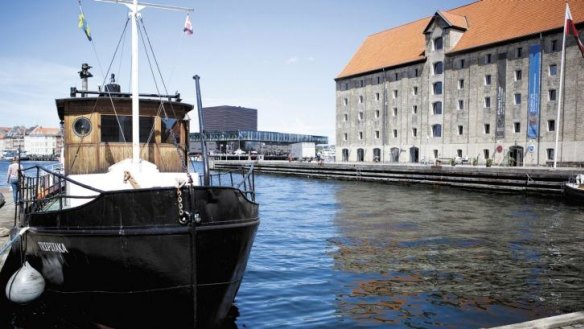
Chef Rene Redzepi has developed a taste for Australia - our sun, surf and ants. Expect the extraordinary when Noma Sydney pops up later this month.
Rene Redzepi, perhaps the most famous chef on earth, is up a tree. A long way up, to be honest.
He's balanced on a ladder, knees together, feet splayed out like a duck. Calculating his potential plunge distance, it seems likely that if he fell, Noma – the two-Michelin-starred Copenhagen restaurant he opened in 2003, four times the San Pellegrino Best Restaurant of the World, and currently ranked number three – would find itself catastrophically leaderless.
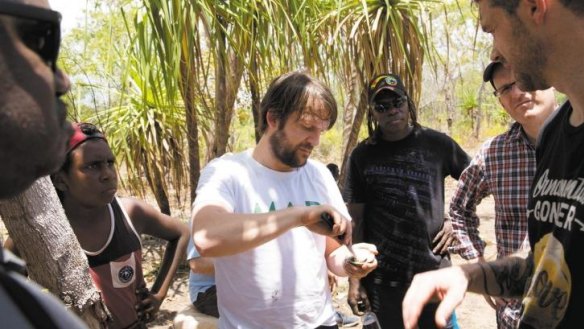
But fortune favours the brave. Redzepi descends without incident, holding a crumpled ball of leaves. He looks, even at 38, like a university student – slim and pale, with floppy brown hair, a soft beard and fine-grained Scandinavian skin. He has unusual eyes – a shade of brown so pale they're almost amber – and he's been wearing the same pair of dark trousers every day since I met him; he teams them with thongs and a never-ending succession of T-shirts. He looks gentle, unmacho. But he has a surprisingly strong, almost leonine profile – big nose, heavy jaw – and his fingers are short and powerful.
He offers up his little ball – now clearly identifiable as an ants' nest – which is, surprise, surprise, crawling with ants. "Did you taste these earlier?" he asks excitedly. The ants are perhaps a centimetre long, brown and energetic, with large, acid-green abdomens, held high over their thoraxes like scorpions poised to sting.
"The taste is in the abdomen," says Redzepi, picking one off and putting it in his mouth. "They bite, yes? Some numbness on the tongue, but not much. Wow," he says indistinctly, lips manoeuvring around his ant. "Wow."
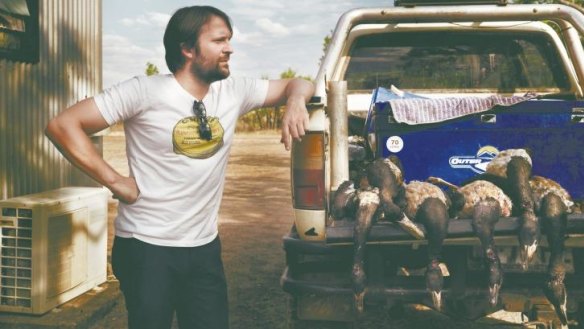
What do you do for a challenge if you're the best chef in the world? If there are only 46 seats in your restaurant and you get thousands of inquiries from eager potential diners each month; if the likes of Massimo Bottura and Ferran Adria count you among their inspirations; if you have 200,000 Instagram followers and you've founded a wildly popular international culinary symposium (MAD – the Danish word for food) and you're in partnership with the Yale Sustainable Food Program? When you are, in short, a seminal influence on a new age of global gustatory exploration? Clearly, you set off to the other side of the world and start climbing trees.
Rene Redzepi is a forager. These days, sourcing food from wild or uncultivated habitats is common practice – but this fact is almost entirely due to Redzepi himself. He was always a gifted chef: he apprenticed at Michelin-starred restaurant Pierre Andre in Copenhagen and worked as a young man at Les Jardin des Sens in France and El Bulli in Spain. But the seeds of his gastronomic greatness – and that of Noma – were only sewn when he took up wandering the outskirts of Copenhagen collecting bark, pine needles and weeds, taking them back to his kitchen, and persuading people to eat them. It takes a culinary genius, after all, to make moss a Michelin-starred meal.
Now, however, he's in different territory – literally. On Australia Day Redzepi will open Noma Australia, a 10-week relocation of his restaurant to the shores of Sydney harbour. He'll bring his entire staff and their families (about 100 people) to a site he will have built from scratch: cutlery, crockery, coffee machine, cold rooms, coal grills. And then he will attempt to re-create the magic of one of the most critically acclaimed dining experiences in the world.
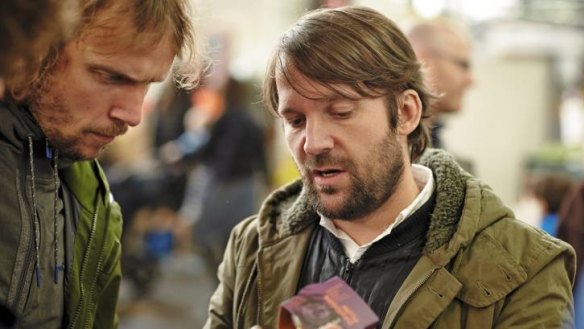
The obvious question, of course, is why? Today, Noma Copenhagen has more than 50 producers regularly supplying the kitchen, plus a test kitchen, a science lab and a fermenting/drying/storing facility, not to mention almost 70 staff and numerous unpaid acolytes working to make Redzepi's merest whim law. Why uproot such a sophisticated, ordered, successful culinary universe and drag it to the ends of the earth?
Redzepi has lots of reasons. He wants the creative challenge; he wants the team-building and staff-retaining opportunity. He took his team to Japan last year (to the Mandarin Oriental in Tokyo) to great acclaim and wants to do something similar here. And he also wants a summer in the dead of Danish winter; he wants surf lessons; he wants (touchingly) his three daughters (aged seven, four and one) to swim in the sea at Bondi. But most of all, perhaps, he wants the chance to forage in a completely new place. "I've eaten a lot of flavours here which are unlike anything I've ever tasted before," he confesses. "And I've tried a lot of shit. I've spent time in the Amazon, south-east Asia, all over Europe. I didn't expect to totally understand things here, but even so ... Some of these flavours are totally out of this world."
Hence the ladder, the ants, the forager's dream. Eating at Noma Australia will involve eating Australian ingredients that Redzepi has discovered during his three research trips here, but that most Australians have never tasted. Think pandanus leaves, muttonbirds, crocodile fat. Think ants.
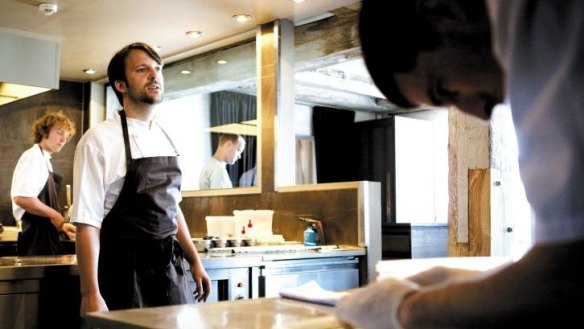
Noma Australia's first potential ingredient is located at Acacia, about an hour out of Darwin, in a shed in the scrub. This shed is open to the elements on two sides, with a dusty concrete floor and a beaten-up ute out the front, a dozen dead black-and-white birds hanging over the tailgate. It seems impossible anything remotely edible could come out of this shed, let alone something worth paying $500 for. (The 5400 available seats at Noma Australia, priced at $485 a head without wine, sold out in minutes.)
Redzepi, however, is undeterred. Climbing out of the four-wheel-drive (he always travels in the front seat because he gets carsick), he pads towards the fire, white feet gleaming in their thongs, flanked by his two test-kitchen sous chefs – culinary stars in their own right – from Noma. Beau Clugston is Australian, a near-professional surfer before he became a chef. Thomas Frebel is German, a near-professional footballer before he became a chef. Both look like heroes on the set of an action movie: tall, broad-shouldered and handsome. But Redzepi, who is barely taller than me (I'm 167 centimetres), is nonetheless the focus of everyone's attention. "So, I think we have some geese?" he asks cheerfully.
Magpie geese are an ancient breed that once covered Australia but are now confined – albeit in very large numbers – to the northern parts of the country. It's legal to eat them, but Redzepi's interest has prompted the seeking of the first commercial licence in Australia. He looks on politely while several birds are de-winged, scalded and thrown into automatic plucking machines. He watches them smashing against the metal drums for a few minutes, then gently suggests the internal organs might be getting "crushed to f..." by the motion. Clugston and Frebel begin plucking by hand, fast and efficient. A local man removes the giblets. Several white plastic tubs of ice appear. The shed is now covered in wet feathers, melting ice and buckets of bird guts as well as dust and flies.
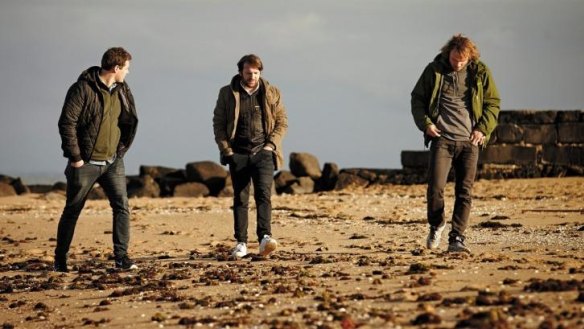
The birds are cooked on a campfire. The flesh is darker than duck, dense, served extremely rare. Stunningly, it's utterly delicious: as rich and deep as beef, but with a subtle sweetness. Redzepi's eyes gleam in the afternoon light. "Fantastic," he says after his first mouthful. "Really fantastic." There's a long silence, filled with chewing. Redzepi now has his eyes on the ground. "We must have this," he says to Clugston. "Don't you think? We must."
After this, it seems churlish not to try an ant. It does bite, and there's a brief weird sensation of a tiny battle on my tongue. Then flavour floods my mouth, like sherbet but with no artificial tang: intensely fresh and bright and lemony. Like the goose – and against all cultural and culinary expectation – it's completely delicious. Redzepi was right. Wow.
Not everything you eat with the best chef in the world is delicious. The following day we fly to the Gove Peninsula, in north-east Arnhem Land. In the tiny aviation shed before we leave, Clugston produces an Aeropress coffee maker, measures coffee, boils water, makes eight cups and clears away in three minutes flat, while Redzepi sits on a plastic chair, chatting cheerfully. He can be extremely vague: he often asks where we are, where we're going, what time – even what day – it is; he forgets his sunglasses and loses his wallet; he always wants the dinner reservation early and always arrives late. But he's funny and self-deprecating and can also be intensely ordered and focused: making notes, taking photos, remembering details.
This morning, everybody has to hop on the scales before take-off and Redzepi has clearly memorised everyone's weight. As we board, he turns to Jock Zonfrillo, the Adelaide-based chef of Orana restaurant who worked at Noma and is here, with his own film crew, to help with indigenous ingredients. "You really weigh less than me?" Redzepi asks him.
"Yes!" says Zonfrillo, delighted. "One kilo."
"One kilo? Well, I was holding my bag." Redzepi lifts the little canvas bag he carries everywhere. "And what about Beau – 103!" He turns to Clugston with a look of gentle wonder. "That's a medium-sized hog."
He spends most of the flight with his eyes closed – he gets airsick as well as carsick – but, given that he sleeps only about five hours a night, presumably he's awake. Like all chefs, he seems capable of working extraordinarily hard almost all of the time: 80 hours in a five-day week in Copenhagen; 20 hours a day for six weeks before Noma Australia opens.
He wasn't always such a committed professional. He left school at 15 "because I was very lazy. I was always very good at everything – I grew up in a partially religious household [his father is Muslim, from Macedonia, his mother Danish], I had two languages, there was a lot of discipline. But we lived in a pretty rough area, lots of immigrants. Nobody was thinking about being a good student. In fact a lot of friends got into trouble: they had to get out of town, go to Greenland, you know." His early years in hospitality weren't much different. "In the first years of Noma, I had several times people come up and say to me, 'I have to leave, Chef. I'm going to gaol.' "
He rolls his eyes, but it's clear he loves the profession and everything that goes with it: the hours, the (once upon a time) lawlessness, the camaraderie. "Certainly nobody does it for the money," he says, which is true: despite being one of the world's half-dozen superchefs, Redzepi and his wife, Nadine Levy-Redzepi, only recently bought their first home. (They met at Noma when she was a uni student studying languages "and we started dating right away. So she knew what she was taking on!" Until recently, Levy-Redzepi ran the bookings at Noma; now she's working on a cookbook.) Noma ran at a loss for several months in 2011; even in 2014, when it was named Best Restaurant of the Year for the fourth time, it made a profit of only 3 per cent. Redzepi shrugs. "It would be good to make some money. But in a good restaurant, with a good team, it has the feeling of a pirate ship. You're out to sea; these are your people; it's a lot of fun." He smiles again. "A great adventure."
Speaking of adventure, Redzepi spends the next six hours with the local people, eating gelatinous, sandy, insufficiently dehaired kangaroo tail, beautiful barramundi, strange blue sea snails, and one huge, perfect clam. In between these things, he worries about hygiene – "Is this paperbark totally food-safe?" – and bemoans his lack of a decent knife: "I think my shell lost its edge in 1989." But it's the clam he's still talking about as we drive home after darkness has fallen.
"So simple, and so new," he says from the front seat. "Exactly the sort of thing we want. Of course we'll work to refine the serving experience so it isn't just a big vulgar mouthful. We might have the leaves of some beach plant just drizzled on top, for some chlorophyll, some brightness. But very simple, very pure."
He addresses Clugston and Frebel, sitting behind him. "So guys, that goose yesterday," he begins. "The butteryness, the chew and then the tenderness, that hint of iron and the sweetness. That was a very big experience for us."
Silence.
"It's right up there, don't you think, among the best of what we've had here? I would say top two. Along with the muttonbird."
Clugston's voice speaks from the darkness: "But that was 50/50. In terms of guests."
"Yes," agrees Redzepi. He turns to Zonfrillo. "It's like the best mackerel you've ever eaten. But it's a bird. So a lot of people won't enjoy that."
There's another long silence.
"Thomas?" says Redzepi eventually. "What do you think?"
Silence.
Frebel has fallen asleep.
The following day we visit a crocodile farm, then buy a tray of mangoes from a roadside stall. I'm the only one with cash, so I buy them. Redzepi comes with me, and it strikes me he's genuinely interested not only in the mangoes, but the mango-purchasing experience: the dreadlocked seller, the heat off the road, the flies buzzing round the stall. This fits with his philosophy that food is powerfully linked to experience, that a simple clam really can tell us something about the sea, the sun, the campfire smoke on a beach on the northern tip of Australia.
Later, when we attend an AFL game, he takes the same pleasure observing the players and the crowd. "Why is it called a grubber?" he asks of a low, bouncing kick. Because it goes along the ground like a grub, I say. Later, during a kick-to-kick on the oval after the siren, I hear him shouting: "Do a grubby!"
An old man beside me in the stands shakes his head. "Who are those guys?" he asks.
They're chefs, I say. From Denmark.
"Oh, yes." The old man nods. "I thought they might be a band, the way they kick. Still, they look like they're enjoying themselves."
The following morning we're back in the aviation shed for a flight to the Tiwi Islands, where we've been promised dugong, buffalo and mud crab. Glancing at the local paper, I note several health warnings about Ross River virus outbreaks in "tidal estuaries and wetland areas". Redzepi, meanwhile, is reading comments on his Instagram feed. "Look at this guy!" he says suddenly. Someone's criticised his photo of the edible ants with the words: "That's why developed cultures don't eat ants."
Redzepi looks mildly furious. "What shall I say?" he asks.
"Nothing," says Clugston.
"No, I've got to say something. It's an educative opportunity."
"Don't start a fight."
"I'll say that's a stupid thing to say."
"That's not starting a fight?"
"No," says Redzepi, suddenly sounding very Danish. "I don't think so. Just to say that's stupid. You can say that without fighting about it."
We board the plane, fly to Tiwi, and proceed to have a day in which no dugong has been caught; the tide is too high for mud-crab; and the only buffalo we see are beyond rifle range. Instead, we drive for more than two hours to a tidal estuary wetland and get bitten by thousands of mosquitoes. Redzepi sidles over. "How long does this Ross virus take to come on?" he asks. "Our pilot has 4000 bites on his back. Will he be able to fly home?"
Zonfrillo, who has been poking about by the water's edge, hands Redzepi a water-lily stem. It carries a strong smell of pond scum. Redzepi looks at it. "No thanks," he says.
"Go on,"says Zonfrillo. "It's edible."
Redzepi takes a tiny bite. "It's edible," he concedes, "but it's not delicious."
After lunch – two slices of white bread and one-fifteenth of a single magpie goose each – we travel two hours back to the airport, where the pilot gets us safely home. Redzepi seems surprisingly undeterred by it all. By the time we reach Darwin, he's talking interestedly about where we should go for dinner.
"What is it? Indian? Thai? Fusion? Really?" He narrows his eyes. Then he turns to me. "I had the best mango of my life yesterday," he announces. "I had one in the afternoon that was so-so, but then I had another one last night and it was amazing! The acidity, the sweetness – almost like a sorbet! I used my spoon, and I made a quenelle." He turns to Clugston and Frebel. "Perfect quenelles: completely, completely delicious."
In the end, perhaps, this is the key to Rene Redzepi. This is the reason he became a chef, and the reason his particular pirate ship became the best in the world; the reason he will scrounge along the foreshores of Scandinavia and among the scrub of Northern Australia when he could be sleeping in or sending someone else; the reason he will put up with mosquito bites and motion sickness and many, many things that don't taste very good. Because he really, really loves it when they do. And so Rene Redzepi's food – wherever it comes from, whatever it involves, and however strange (or strangely familiar) it may appear – will always have at least one quality we can rely on. It will be delicious.
Restaurant reviews, news and the hottest openings served to your inbox.
Sign up